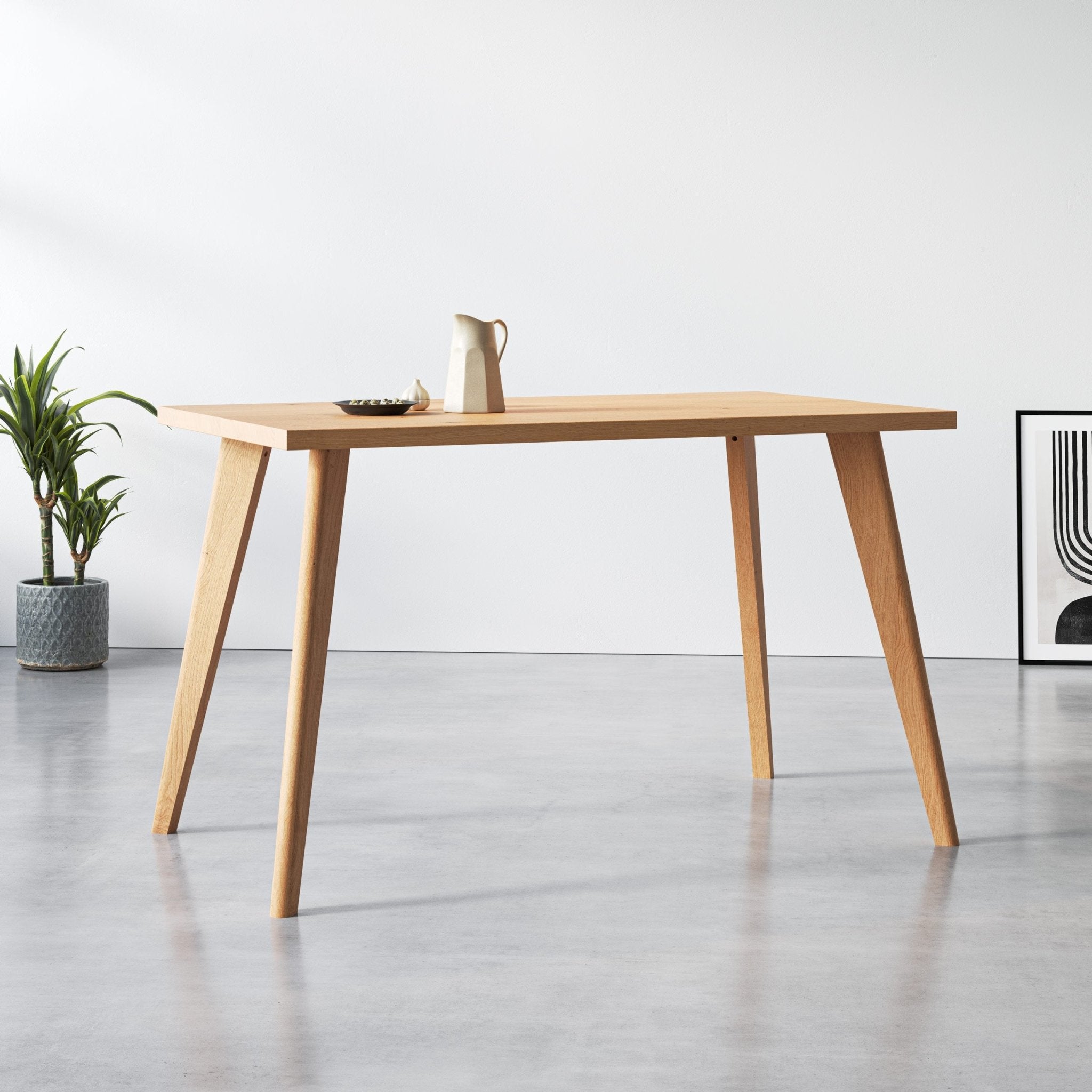Tailor Your Table with Unique Dining Table Legs Wood Creations
Discovering the Different Sorts Of Table Legs Timber for Your Dining Room
The choice of dining table legs wood can profoundly influence both the aesthetic and functional top qualities of your dining area. Strong timber choices, such as oak and walnut, supply a timeless look with unequaled durability, while engineered timber choices supply innovative styles that imitate the splendor of all-natural grains.
Strong Timber Options

Unlike engineered materials, solid timber is much less susceptible to bending and damages over time when effectively preserved. Each piece of strong timber is one-of-a-kind, showcasing specific characteristics that add to the charm and personality of the eating table.
In addition, solid timber can be ended up in countless means, varying from all-natural oils to tarnished surfaces, enabling house owners to customize their furniture to match their design. In summary, selecting strong wood for dining table legs not just ensures architectural honesty however likewise enhances the visual allure of the eating area, making it a worthwhile financial investment for any kind of home.
Engineered Timber Alternatives

Plywood, constructed from numerous layers of wood veneer, is particularly solid and steady, making it an outstanding selection for eating table legs. Its layered make-up enables it to withstand adjustments in humidity and temperature level much better than conventional strong wood. MDF, on the various other hand, uses a smooth surface for paint or veneering, enabling designers to attain a refined look while preserving structural stability.
Particleboard, typically used in affordable options, supplies decent stamina and is light-weight, making it simpler to handle. Nevertheless, it may not be as durable as plywood or MDF. When choosing crafted wood options, it is important to think about the intended use and preferred visual. These materials not only improve the capability of dining spaces however additionally permit higher style adaptability, guaranteeing that contemporary and typical styles can exist together sympathetically.
Reclaimed Wood Includes
Reclaimed wood provides a distinct blend of sustainability and character, making it an increasingly popular choice for eating table legs. Sourced from old barns, manufacturing facilities, and various other frameworks, recovered wood embodies a history that brand-new products simply can not replicate. Each piece lugs its very own tale, marked by distinct imperfections, knots, and differing grain patterns, which add to a table's special visual appeal.
In addition to its aesthetic beauty, recovered wood is an moved here eco-friendly alternative. By repurposing formerly used products, it lowers the demand for new lumber, hence assisting to lessen and conserve forests waste. This lines up with a growing consumer choice for sustainable practices in home furnishings.
In addition, recovered timber is often extra long lasting than newly collected wood due to its age. The sites all-natural drying procedure that recovered timber goes through results in a denser and more powerful product, making it less at risk to bending and splitting. This boosts the durability of eating tables, enabling them to withstand the roughness of daily usage.
Softwood vs. Wood
When choosing eating table legs, recognizing the differences between softwood and hardwood is critical for achieving both aesthetic and practical objectives. They commonly exhibit a more rustic appearance, making them appropriate for country-style or laid-back eating areas.
On the various other hand, woods, sourced from deciduous trees like maple, oak, and cherry, are renowned for their density, stamina, and longevity. The intricate grain patterns and rich hues of hardwoods provide a classic and innovative appeal, making them ideal for official eating setups. While woods often tend to be a lot more costly and much heavier, their durability against wear and tear frequently justifies the investment.
Inevitably, the selection in between softwood and hardwood for dining table legs should align with your layout vision, use requirements, and budget, guaranteeing that your dining room shows your personal design while continuing to be practical in time.

Treatments and finishes
The aesthetic appeal and longevity of table legs can be significantly enhanced through various finishes and treatments. look at here now These procedures not just shield the timber from damages however likewise raise its appearance, allowing it to enhance varied indoor designs.
One usual therapy is discoloring, which penetrates the timber and improves its natural grain while including shade. Stains offer a rich, classy appearance, making it possible for house owners to match their furnishings with existing decoration. Alternatively, clear surfaces such as polyurethane or varnish produce a protective layer without altering the wood's original shade, ensuring durability versus wear and tear.
In addition, natural oils, like tung or linseed oil, nurture the timber and use a subtle luster, all while being environment-friendly. These oils allow the surface area to breathe, avoiding moisture buildup and possible bending.
For those seeking a rustic beauty, troubled or weather-beaten coatings can be applied to develop an aged look, adding personality to the item. Ultimately, the option of finishes and therapies depends on individual preference, wanted looks, and the certain timber type, making it essential to think about these factors when choosing eating table legs for your area.
Verdict
Strong timbers, crafted alternatives, and reclaimed options each offer unique advantages, catering to different preferences and requirements. Eventually, the option of wood type need to straighten with wanted design, durability, and environmental considerations, enhancing the overall eating experience.
The selection of eating table legs timber can exceptionally affect both the practical and visual high qualities of your dining space - Dining Table Legs Wood. Solid timber alternatives, such as oak and walnut, give a timeless appearance with unmatched durability, while crafted wood options offer cutting-edge layouts that imitate the richness of natural grains. Strong wood supplies a classic quality that can elevate the overall design of a dining space. Each item of strong wood is one-of-a-kind, showcasing private qualities that include to the charm and personality of the dining table
In addition, reclaimed timber is typically more resilient than freshly harvested wood due to its age.